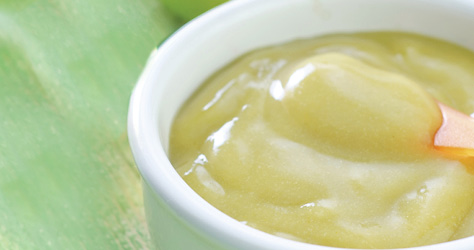At a glance
- Experimenting and exploring when weaning will help your baby start to accept a variety of tastes, textures and flavours
- A nutritious, balanced diet will be the basis of good eating habits for life
- Offer fruit and vegetables at every meal and don’t be discouraged if it takes a long time to accept a new taste

How can weaning lay the foundation of good eating habits for life?
Judy says: Experimenting and exploring when weaning will help your baby start to accept a variety of tastes, textures and flavours. It will also help with joining in at family mealtimes and introducing family foods. Learning to chew and sip liquids will help will help with joining in at family mealtimes and moving on to family foods.
What are the potential problems children face if they don’t eat healthily?
Judy says: Babies learn to like healthy foods if they are offered them during weaning and early childhood. Children prefer familiar foods and if they have learnt to like healthy foods, they will be happy to keep eating them especially as they get older and start making their own choices.
A nutritious, balanced diet with a vitamin D supplement prevents childhood nutritional disorders like:
- Iron deficiency and anaemia
- Vitamin D deficiency and rickets
- Growth problems
- Tooth decay
- Eating difficulties
Good eating habits acquired in the first few years of life may help prevent lifestyle diseases later in life, like cardiovascular disease, diabetes and some cancers.
What about obesity?
Judy says: Children who eat more than they need or eat a lot of high sugar or high fat foods are the children most likely to become obese. Research shows that children who eat a balanced diet are less like to become overweight or obese. Diseases such as coronary heart disease, stroke and non-insulin dependent diabetes are more likely to develop in older children and adults who are obese. Watching TV while eating is linked to childhood obesity.
How can you help babies enjoy the tastes of foods that are good for them – vegetables, for example?
Judy says: Start by giving your baby vegetables early on in weaning because babies accept new tastes more quickly when they are younger. As they progress to to three meals a day offer fruit and vegetables at every meal and don’t be discouraged if it takes a while for them to accept a new taste. Combine vegetables with potato, rice or pasta and you can also add fromage frais or natural yoghurt to fruit.
How do you introduce babies to a variety of textures?
Judy says: Making meals varied in taste and texture will help your child to accept foods with different consistencies. Let your baby touch and feel food – if a baby plays with a new texture of food they may be more willing to put it in their mouth.
Once babies are playing with food and putting it in their mouths, you can offer them food with a coarser texture.
Make sure you’ve offered your baby lumpy foods by the time he’s 9 months old.
Foods should become more textured gradually. You can also try adding very well-cooked lentils or couscous to savoury food.
How can I stop my baby from getting a taste for sweet things?
Marti says:
It’s important to think about dental health when you’re weaning. Don’t add sugar to foods or drinks for babies or young children, and avoid processed foods that contain a lot of sugar. If you do offer sugary foods, only do so at mealtimes.
Fruit juices are not necessary for babies as breastmilk and formula milk both provide vitamin C. Fruit juices contain sugar which can cause tooth decay, and are acidic which can cause dental erosion. If you do offer juices, only offer them at mealtimes – and always make sure they are well diluted with water – use at least 10 parts water to 1 part juice.
Use a feeding cup as soon as possible, definitely from about six months, and brush your baby’s teeth twice a day as soon as his first tooth has come through.
What do you do if your baby keeps rejecting certain types of foods – lumpy foods, for example?
Judy says: Keep offering new textures as some babies need more time and practice to learn how to manage them in their mouth. If lumps are a problem, try more finger foods, as many babies prefer to feed themselves. Using their fingers when eating can also help their general development. If lumpy foods are moist, they are easier for babies to eat.
How can good weaning practices help children learn about good table manners and eating with others?
Judy says: Having the family meal at a table without TV or other distractions is important to encourage interaction – and interaction with a calm parent will help a baby eat well. Children learn by copying so they will learn their table manners by copying you at mealtimes.
It’s been shown that children aged two to five are more likely to eat a new food if adults and other family members are eating it, too. Eating with other children also influences children’s behaviour, in terms of what foods they like to eat.
Children from families that watch a lot of TV eat fewer fruits and vegetables – but more fast food, snack foods and fizzy drinks. In younger children, distractions like TV can cause them to eat less.